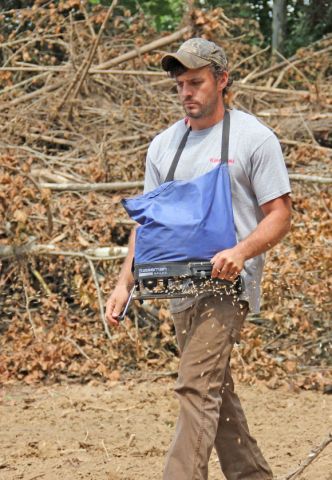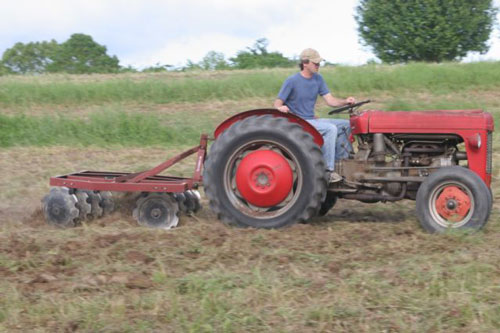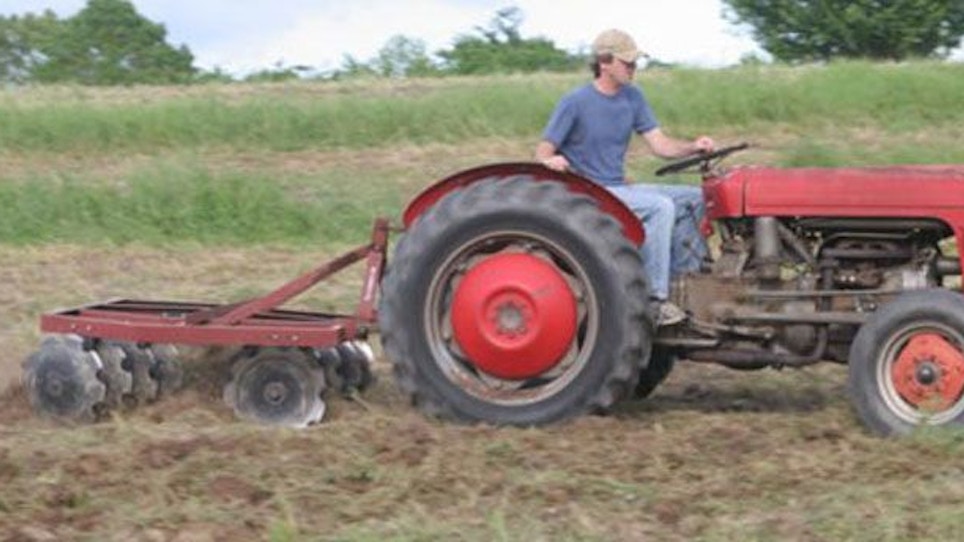
What’s Right For You?
What you plant is determined primarily by what you hope to achieve. There isn’t a single best food plot, or at least one that will do everything all year long. Fall-planted plots, for example, are mostly used for attraction. That is, they offer a high-quality food source during the hunting season and help hold deer on your property into the winter.
A spring and summer food plot, on the other hand, is meant to provide nutrition. They will keep deer around, of course, and many types of food-plot plants will provide nutrition into at least part of the hunting season. But warm-season plots tend to be high in protein, the primary ingredient responsible for antler growth.
The best food plots vary from region to region, but a number of plant varieties offer high-quality whitetail-deer food when the deer need it most. Corn, beans and peas are all high in protein.
Corn and beans tend to require more time and money to plant and maintain. They need lots of fertilizer and they also need a specialized piece of equipment called a seed drill to plant the seed. A seed drill isn’t mandatory. You can top-sow corn or beans and then make a pass over the seeded area with a disk. That will bury the seed, but it can’t control the seed spacing or the planting depth, both important ingredients in a corn or bean plot.
Both plants are great food for wildlife, though, and sowing corn or beans with a Moultrie ATV-mounted spreader can produce a decent plot without a seed drill. Turkeys devour corn and beans. Quail and pheasants will, too. Standing corn provides great food for wildlife, and it’s also great cover for deer and upland game.
Blends Are Better
Instead of planting a single plant, hardcore food plotters are more likely to plant a variety of seeds in a single whitetail deer food plot. Blends offer a number of advantages. First, they give deer a variety of food sources in one small area. Blends also ensure that something is always available during extreme weather conditions. One plant might tolerate drought while a different plant might withstand saturated soil.
There is no perfect blend, but many of the commercially available products include climbing soybeans and peas along with sorghum or sunflowers. All are high in protein. Experiment and see what works best in your region and soil type. Better yet, let the deer tell you what blends work best.
 How To Plant A Food Plot
How To Plant A Food Plot
Planting food plots is relatively easy. You need some basic equipment to expose the soil, of course. Without adequate seed-to-soil contact, your seeds won’t establish a tap root. They might sprout, but they won’t grow. The best tool for that job is a disk. Smaller disks that can be pulled behind an ATV tend to be fairly light and have a difficult time cutting through hard soil, but make enough passes and you’ll eventually accomplish the job. A bigger disk pulled behind a tractor will cut through thick vegetation faster, saving you some time.
Spray First
Before you pull a disk, though, you’ll need to kill the existing vegetation. Spreading seed on a blanket of thick fescue is a waste of time and money. Some of the seeds might sprout, but the grass will shade out new sprouts and prevent them from growing. A backpack sprayer filled with a non-selective herbicide can get the job done, but an ATV-mounted sprayer like Moultrie’s 25-gallon, 10-foot boomless sprayer can make quick work of even the largest job. Fill it with a mix of glyphosate (the active ingredient in Round Up) and water and make a pass. A week or so later, run over the dead vegetation with a disk, making enough passes to expose the dirt. The seed must touch soil instead of falling on dead plant matter.
If you start early enough, you might have time to wait a week and then disk the plot again to expose even more soil. Just make sure you don’t spread your seeds too early, though. They need a soil temperature of at least 65 degrees to germinate. Also, a late frost will kill young plants. Consult your local farm supply or garden store for the last frost dates for your region.
No matter what you plant right now, your whitetail deer hunting will improve dramatically when the season opens. You might see bigger antlers or fatter does, or you might see more deer on your property longer into the hunting season.






